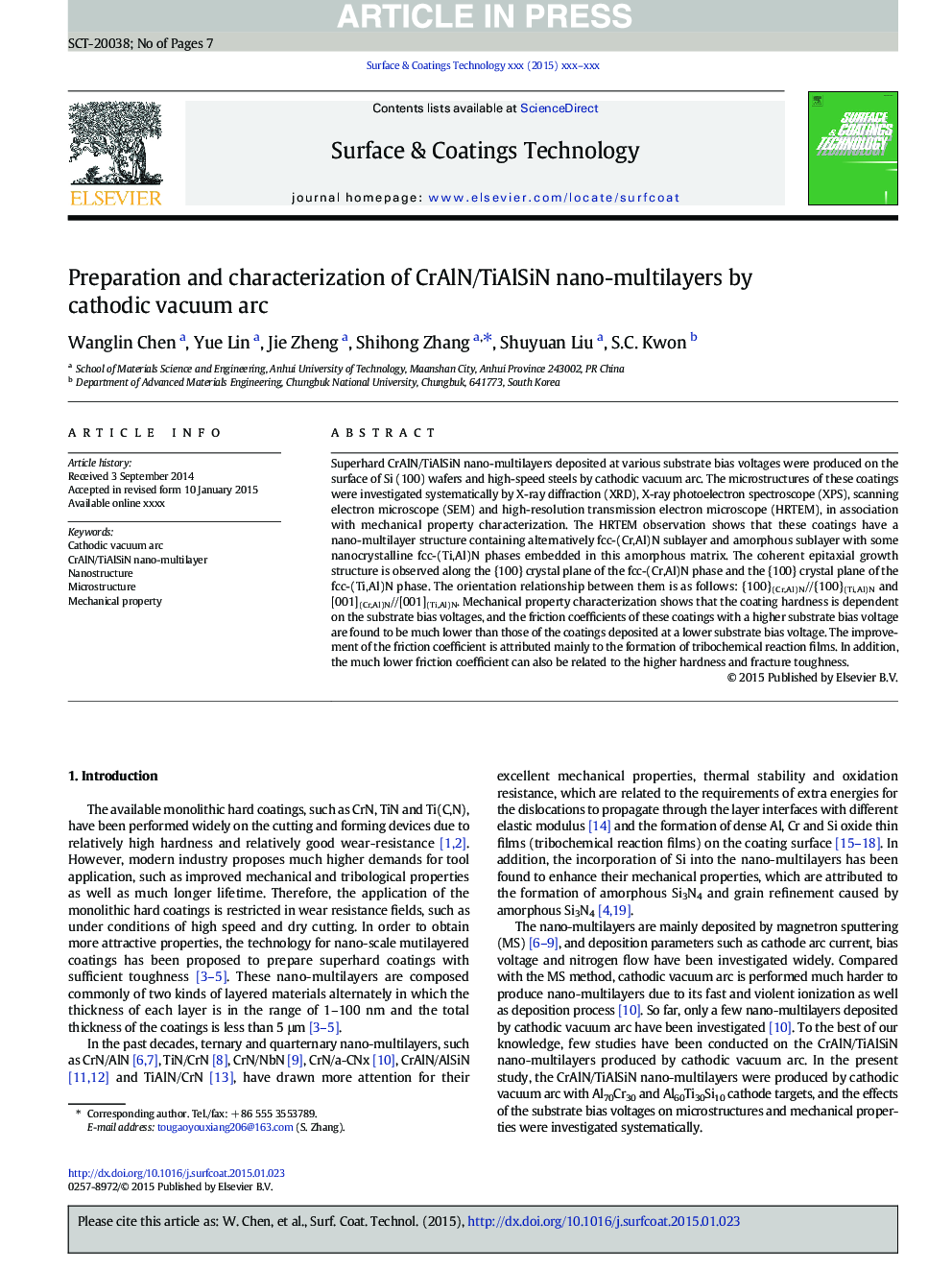| Article ID | Journal | Published Year | Pages | File Type |
|---|---|---|---|---|
| 1657140 | Surface and Coatings Technology | 2015 | 7 Pages |
Abstract
Superhard CrAlN/TiAlSiN nano-multilayers deposited at various substrate bias voltages were produced on the surface of Si (100) wafers and high-speed steels by cathodic vacuum arc. The microstructures of these coatings were investigated systematically by X-ray diffraction (XRD), X-ray photoelectron spectroscope (XPS), scanning electron microscope (SEM) and high-resolution transmission electron microscope (HRTEM), in association with mechanical property characterization. The HRTEM observation shows that these coatings have a nano-multilayer structure containing alternatively fcc-(Cr,Al)N sublayer and amorphous sublayer with some nanocrystalline fcc-(Ti,Al)N phases embedded in this amorphous matrix. The coherent epitaxial growth structure is observed along the {100} crystal plane of the fcc-(Cr,Al)N phase and the {100} crystal plane of the fcc-(Ti,Al)N phase. The orientation relationship between them is as follows: {100}(Cr,Al)N//{100}(Ti,Al)N and [001](Cr,Al)N//[001](Ti,Al)N. Mechanical property characterization shows that the coating hardness is dependent on the substrate bias voltages, and the friction coefficients of these coatings with a higher substrate bias voltage are found to be much lower than those of the coatings deposited at a lower substrate bias voltage. The improvement of the friction coefficient is attributed mainly to the formation of tribochemical reaction films. In addition, the much lower friction coefficient can also be related to the higher hardness and fracture toughness.
Related Topics
Physical Sciences and Engineering
Materials Science
Nanotechnology
Authors
Wanglin Chen, Yue Lin, Jie Zheng, Shihong Zhang, Shuyuan Liu, S.C. Kwon,
